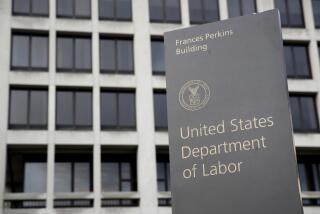Disability Recipients Can Earn More Starting Jan. 1
- Share via
WASHINGTON — On the first day of the new year, new rules will raise the amount of money recipients of government disability benefits may earn, the Department of Health and Human Services announced Friday.
Health Secretary Louis W. Sullivan said the increases “will serve as an additional incentive for many disabled Americans to return to work and improve the quality of life for themselves and their families.”
The rules will affect recipients of Supplemental Security Income and Social Security Disability Insurance who are not blind.
Disability insurance recipients are allowed to earn up to a certain amount and still receive benefits. On Jan. 1, the allowed earnings level will increase for the first time in more than a decade.
The new rules will change the trigger for the “trial work period,” during which a disability insurance recipient continues to receive benefits for nine months after returning to work. Since January, 1979, a recipient has entered a trial work period when he earns more than $75 a month or works more than 15 hours a week. That will increase to $200 or 40 hours.
Disability insurance benefits can continue only under certain conditions when the recipient’s earnings reach the “substantial gainful activity” level, which has been set at $300 a month since January, 1980. That trigger will rise to $500.
The substantial gainful activity gauge is also used to determine eligibility in the Supplemental Security Income program.
The allowed earnings level for blind recipients of disability insurance is set by another regulation and is now $740 a month. That will rise to $780 on Jan. 1, a Social Security spokesman said.
The disability insurance program pays about $1.7 billion each month to 2.8 million workers and 1.2 million dependent spouses and children of disabled workers.
More to Read
Sign up for Essential California
The most important California stories and recommendations in your inbox every morning.
You may occasionally receive promotional content from the Los Angeles Times.













